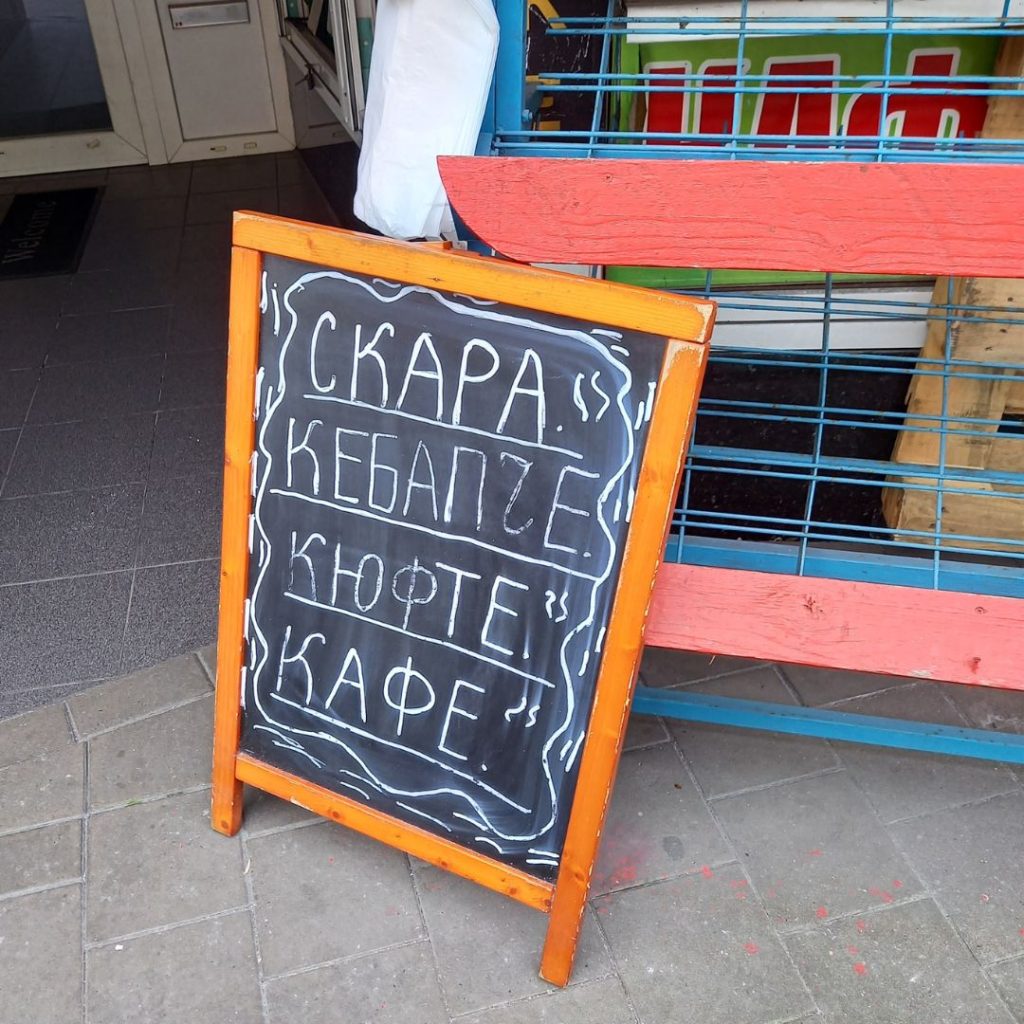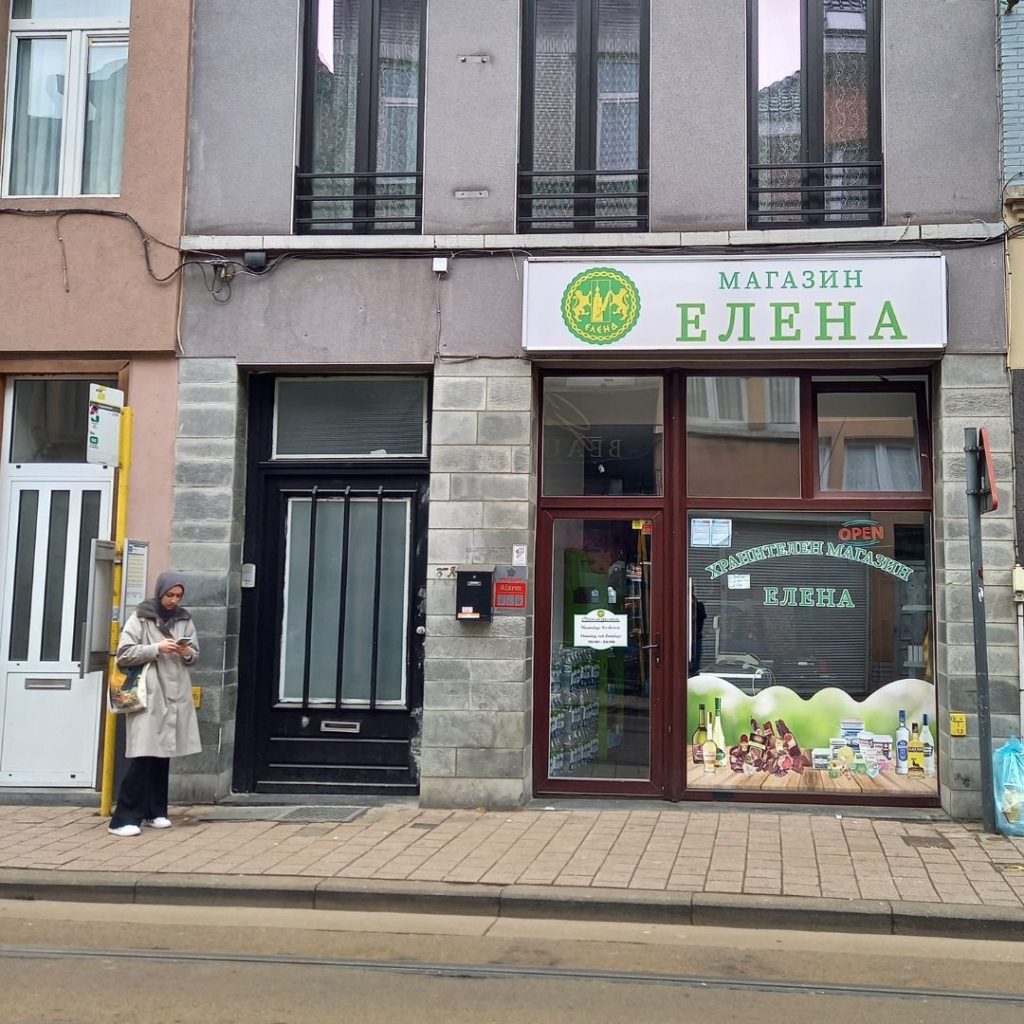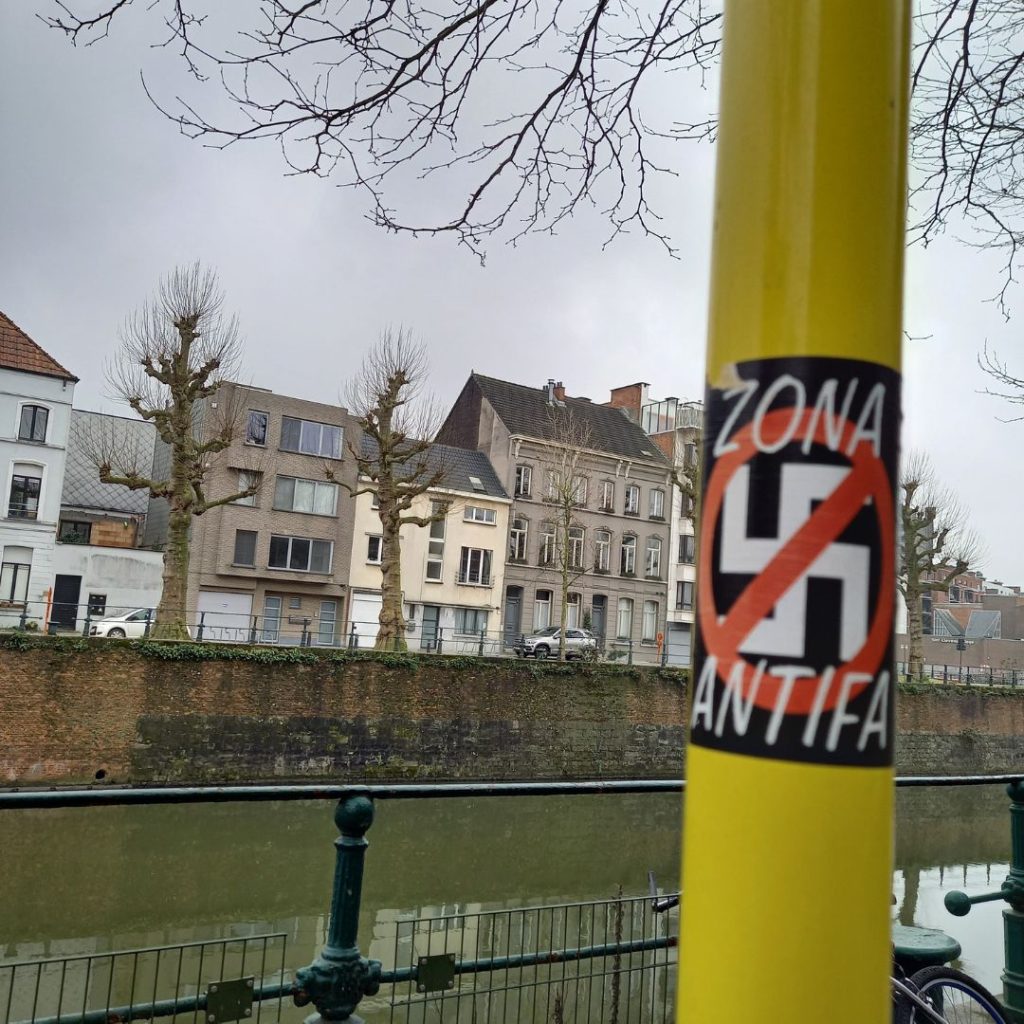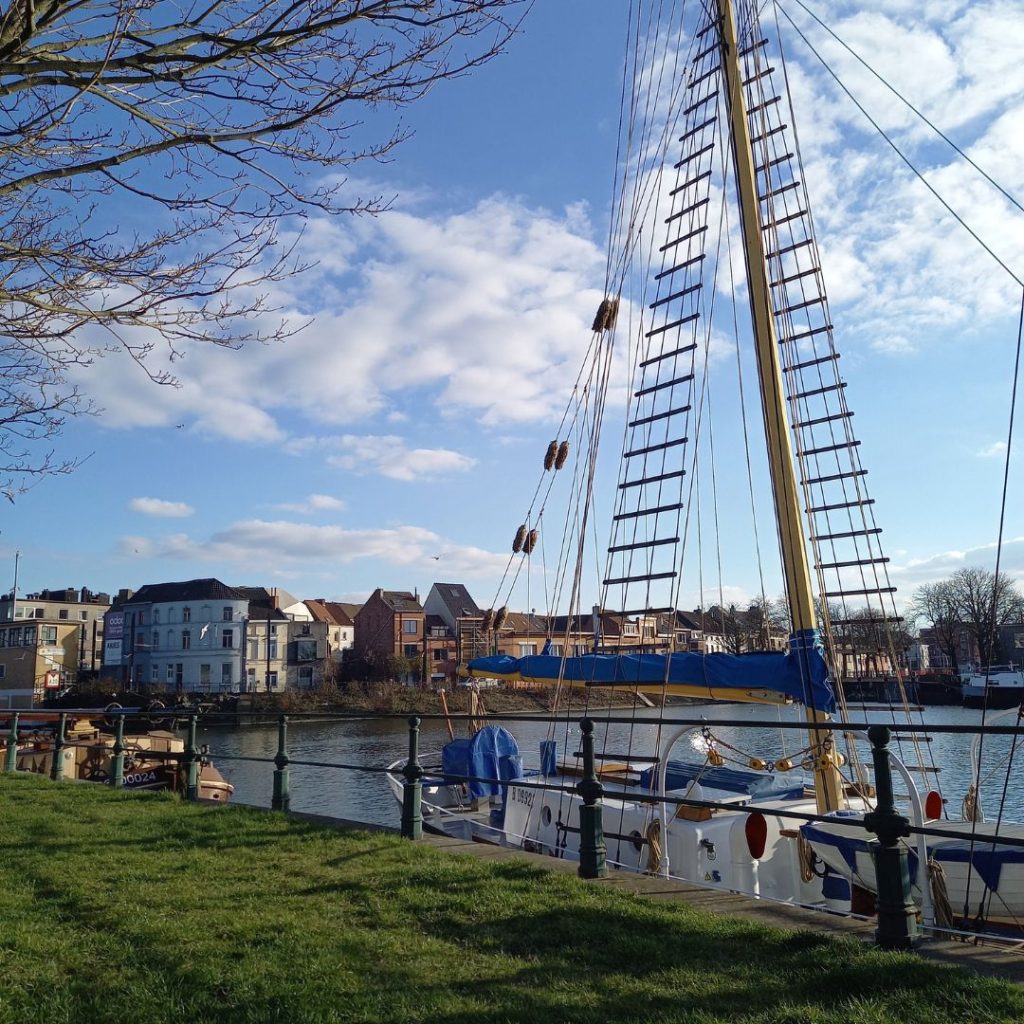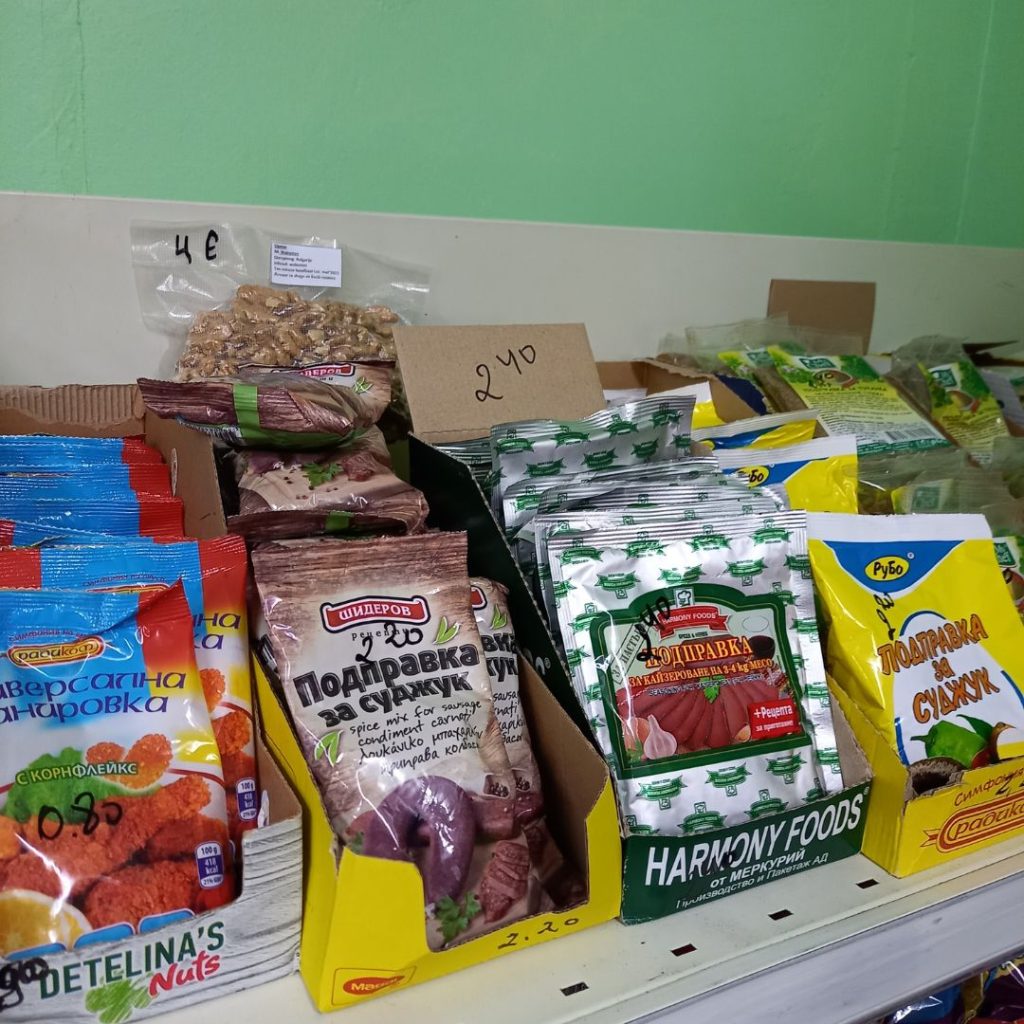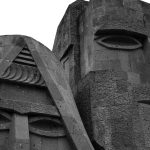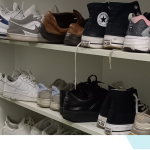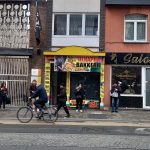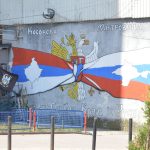Balkan Encounters in Ghent: An Urban Photo-Essay
Ghent’s urban landscape displays migration experiences since the time of ‘global socialism.’ Under the guise of multiculturalism, gentrification has slowly transformed the areas around the city center where several citizens from Central-East and Southeast European countries have been settling down after the EU accession between 2004 and 2007. More recently, the 2015 Syrian refugee crisis forced many asylum seekers to restart their lives downtown and distracted locals’ attention away from the older diaspora communities.
Yet some neighborhoods continue to show a more ‘old-fashioned’ ethnic makeup. The urban areas of Dampoort, Sleepstraat, and Brugse Poort have been hosting the well-known Bulgarian/Turkish diaspora, whose first arrival dates in the 1980s when the Communist Bulgarian regime’s assimilation campaign (Възродителен процес) was orchestrated against their ethnoreligious identity. After 1989, many other Bulgarians arrived.
- Turkish Mosque in Dampoort
- A Turkish flag
- Dampoort’s Clock Tower
In Dampoort, Turkish flags appear proudly through house windows. The local mosque and cultural center are usually crowded for the Friday praying. On the other side of the canal, a few Bulgarian Pekarni [bakeries] merge with other Turkish grocery stores just behind the railway station. Some remain closed after the pandemic shockwaves have affected people’s businesses. Others keep welcoming clients in Turkish and Bulgarian.
On my way to a local NGO operating in this neighborhood, a cafeteria resembled a street corner of downtown Sofia, Bulgaria. A little kiosk on wheels advertising ‘Sladka Tsarevitsa’ (sweet/hot corn with some toppings on top) convinced me to stop by. Once inside, I could not but recognize ‘Radio Edno’ pumping up pop music and Bulgarian news. On a wall, a Cyrillic-written Bulgarian poster promoted (quasi-)bistro menu: kashkaval, kaymak, sudzhuk s kashkaval, along with a variety of coffees, late makiato, and chai [tea]
- Sladka Tsarevitsa
- The Menu
- From Bulgaria with Love
Едно еспресо и една малка минерална вода…
After ordering an espresso and a small bottle of water, the owner could not believe her ears as I spoke Bulgarian. In retrospect, her reaction made sense. I looked like, and I was, after all, a ‘stranger.’ Her adult son served my coffee in a matter of minutes in the most typical Bulgarian way: smetana (coffee cream) next to a small cup and a wrapped-up ticket luck, which reminded me of Bulgarians’ superstition and reverence for supernatural forces. While sipping my coffee and scrolling my email inbox, I realized that only Bulgarian was spoken inside. All clients were of Bulgarian origin and (seemed to be) regular clients. The level of intimacy was so evident that a man openly complained about his electricity bill. At the same time, another asked for a lighter in the smoking room yet addressed other smokers in Turkish.
Before leaving, I exchanged a few extra words with the owner and her son. With a bitter tone of voice, he complained about the job market in Bulgaria. His mom followed suit: ‘Now Bulgarians are everywhere,’ and the lack of ‘urban mentality’ seemed a concern. Once I introduced myself and my research better, I was soon associated with people from cultural elites [от културния елита], nothing to share with ‘urban villagers.’ Maria Todorova would argue about such a self-colonising set of boundaries dividing Balkan/European people along different mindsets. Even my Bulgarian fluency (far from perfect) was labeled as ‘better than [their] kids” lacking fluency in Bulgarian even though their parents speak their mother tongue at home.
Bulgarian could be easily heard across the streets, too. Other signs of Bulgarian-ness were visible around: from a medical sign to a small plate informing every pedestrian about the householder’s unquestionable membership to the Levski football team.
- I’m a Levski Fan
- Cyrillic-written Russian Aid
- Tasty Balkans
Along an anonymous street a bit far from Dampoort, another white-green-red shop façade attracted my attention. The signpost ‘skara’, ‘kebabche’ ‘kiofte’, ,’salata’, [grilled meat, meatballs, and salad] did not leave doubt about the origin of the cuisine. I stopped by, knocked on the takeaway window, and asked for the second coffee of my day.
– Добър ден, може ли едно кафенце със сметана?’
– Да, може! … говориш Български добре, а българин ли си?’
Using the word ‘kafentse’ – a diminutive for kafe [coffee] in everyday Bulgarian language – brought a smile to the guy’s face standing on the other side of the glass window. After introducing myself again, we immediately began talking about Bulgarians living in Ghent. Workplaces, recreational life, and even discos, ‘everything is in Bulgarian here’ [всичко е на български тук], he admitted. Yet studying ‘niderlanski’ (probably Flemish) was his priority.
- Bulgarian Offers
- A Bulgarian Store in Sleepstraat
- A (Non)Politicised Area
Bulgarian diaspora has been carrying a mosaic of ‘ethnosi’ – Bulgarian, Vlach, Roma, and Turkish, he informed me. When I told my new friend to be interested in exploring the political engagement of the Balkan diaspora in Ghent, he promptly backed me: “what kind of politics are you interested in? In Bulgaria, the situation is a disaster …”.
“..в момента, правя еднo иследванe на хората oт Балканите, които живеят тук, и политиката…”
“политика? Каква политика тe интересува? Сега, политиката на България е катастрофа…”
The association between my interest in politics and his country of origin made me think of the previous replication of Bulgarian everyday life and some discursive patterns typical among Bulgarians. That association also gave me an image of closeness between my encounter and his country of origin and, at the same time, a more profound sense of separateness between the home and host country. Or, perhaps, the ‘political’ lies in the decision to maintain a tie with Bulgaria while navigating a complex life ‘in’ and ‘between’ more than two cultures.
- Brugse Poort
- Ongoing Gentrification
- Spices from Bulgaria
Methodology: Data and first-hand information have been collected through a participation-observation method combined with written considerations and visual ethnography. The latter lies in the research approach of recording experiences through photos, while the former is needed to grasp better knowledge ‘from below.’ In this short photo essay, the aforementioned places and informants have been anonymized to avoid any security threat.
See More: Swartz, D. (1989) “Visual Ethnography. Using Photography in Qualitative Research”, in Qualitative Sociology, 12 (2); Angrosino, M. (2017) Doing Ethnography and Observational Research. London: SAGE Publications Inc.
*This short article is being written while conducting a broader research project on the “Civic Responses and Cultural Identity Dilemmas of Second-Generation Balkan Muslims in Time of Illiberal Democracy” (2021/43/B/HS6/00451) funded by the National Science Centre in Krakow, Poland, through the OPUS22 research grant.











